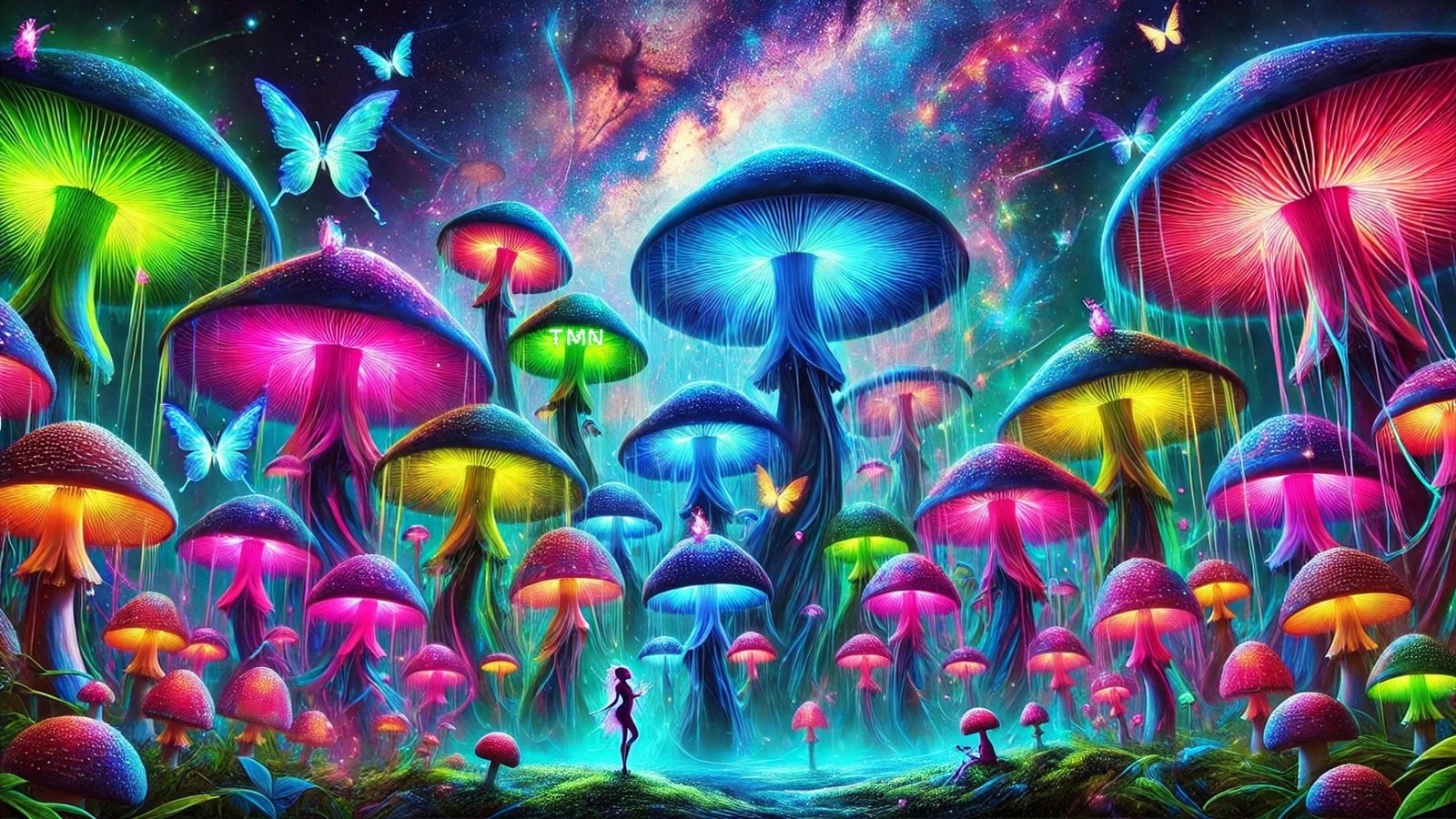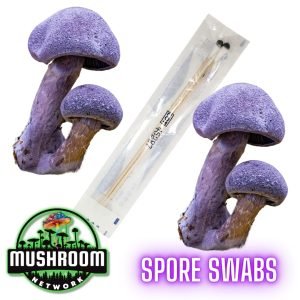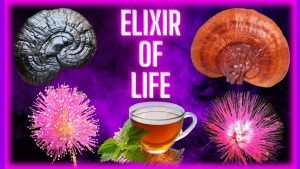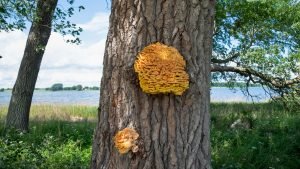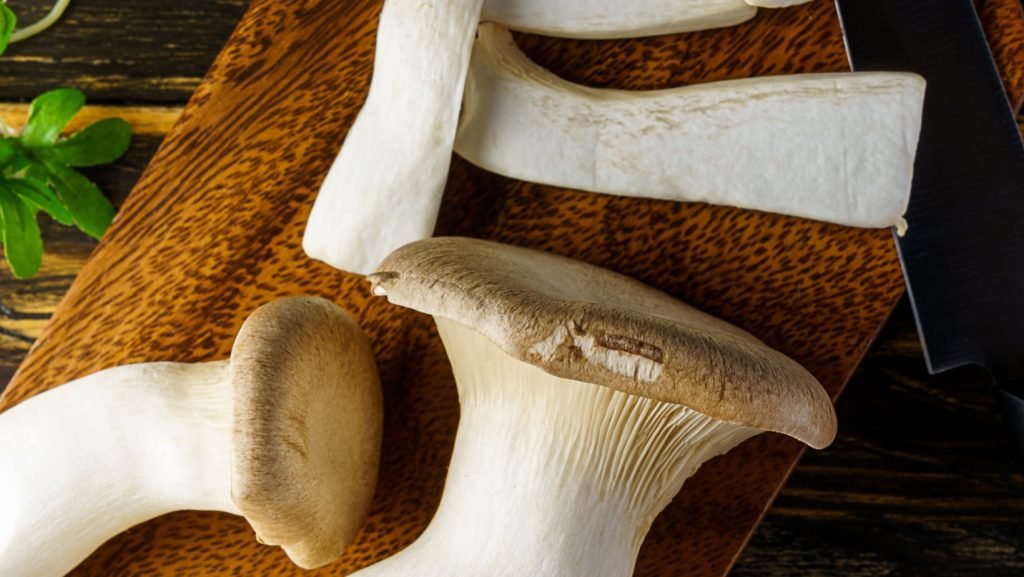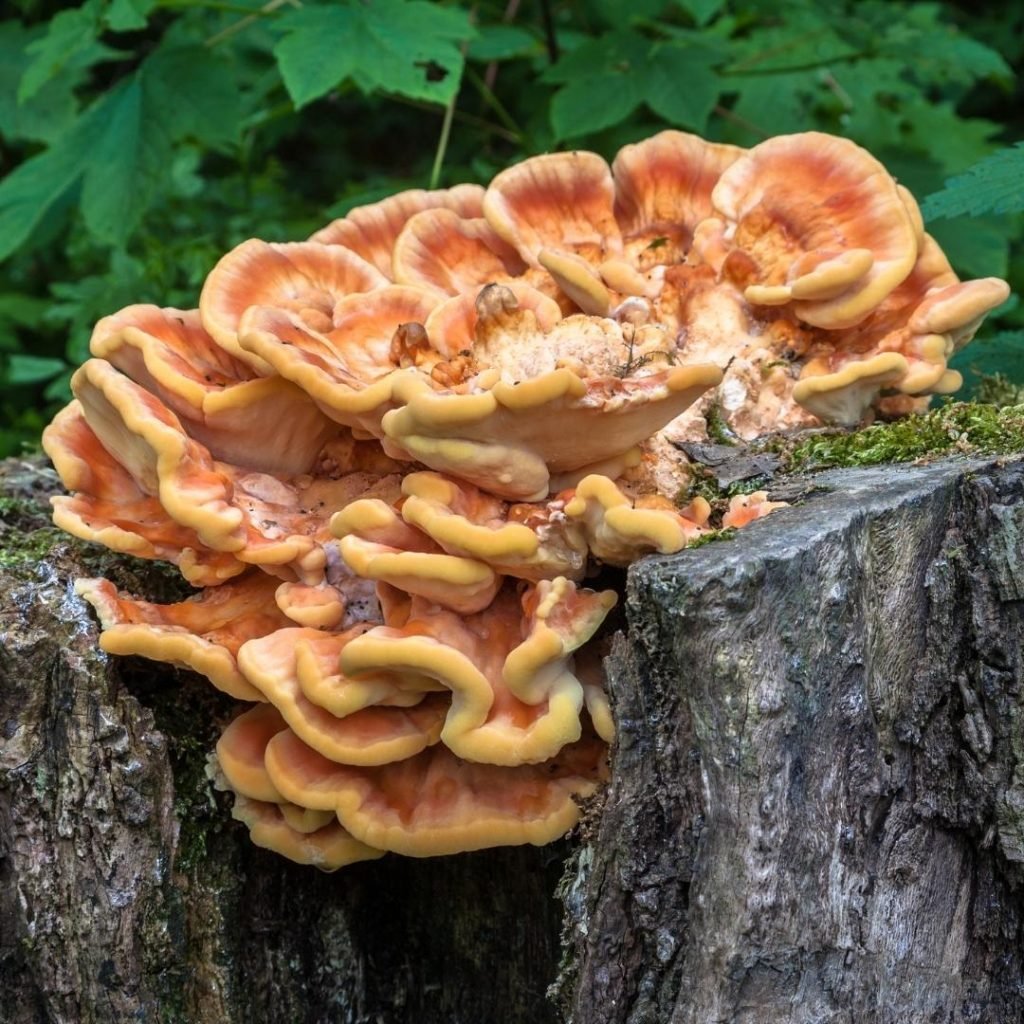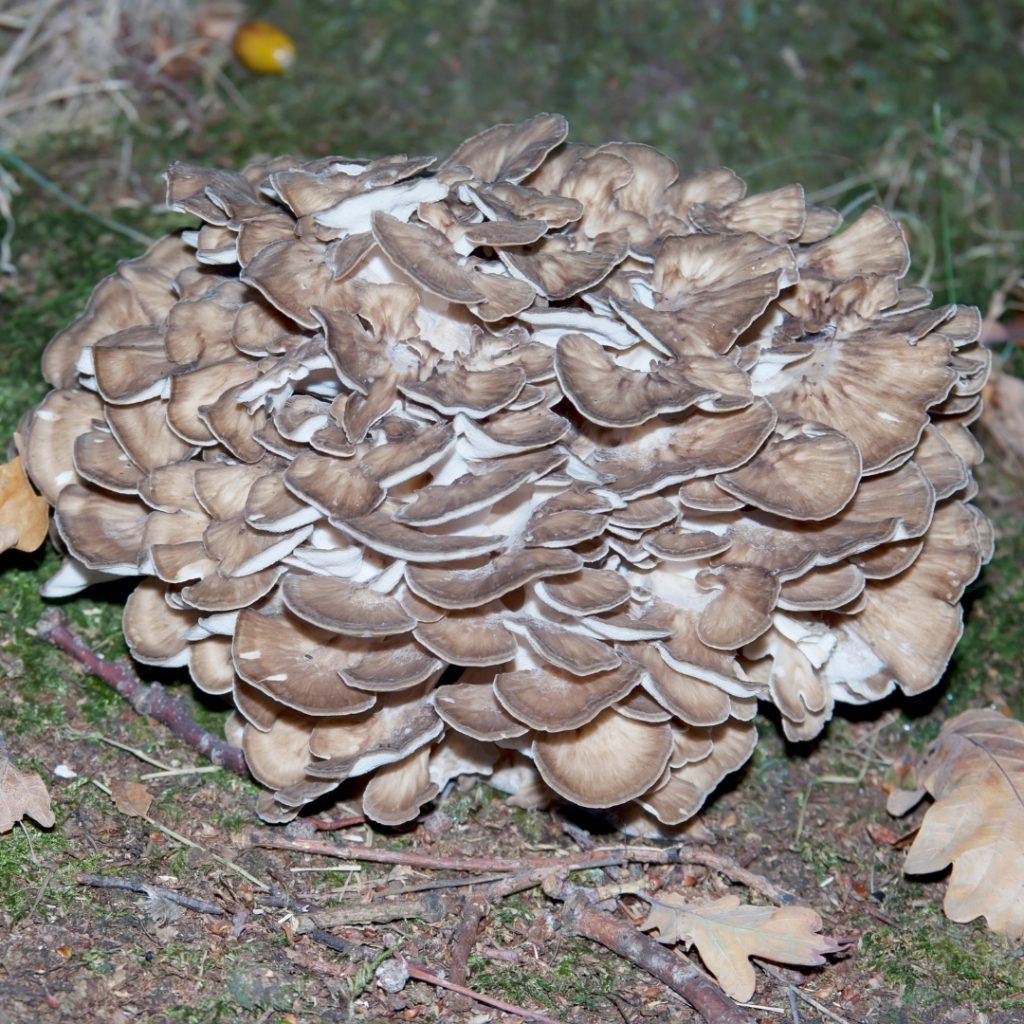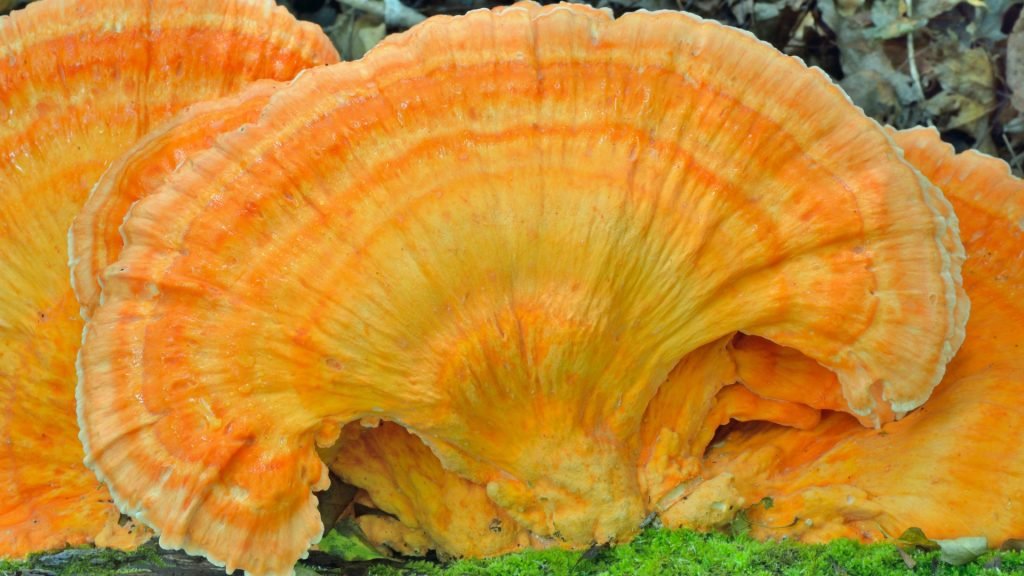Psychedelic art, a genre born from altered states of consciousness, finds one of its most powerful muses in mushrooms—particularly those containing psilocybin. These fungi, revered for their psychoactive effects, have shaped how artists perceive and depict reality, transforming ordinary visuals into extraordinary, mind-bending experiences. From ancient symbolism to modern digital surrealism, mushrooms have journeyed through the world of art, not just as subjects, but as catalysts for visionary creativity. Their role in psychedelic art serves as a bridge between the tangible and the metaphysical, offering insights into both nature and consciousness.
The Visionary Influence of Psilocybin Mushrooms on Artistic Expression
Psilocybin, the psychoactive compound found in certain mushroom species, has a profound impact on sensory perception, particularly visual stimuli. Artists who ingest these mushrooms often report heightened awareness of color, texture, and pattern, as well as the experience of synesthesia, where the senses blend together—sounds become colors, and shapes have a palpable texture. This multisensory experience becomes a playground for creativity, driving artists to depict the vibrant, fluid, and kaleidoscopic visions that come to life during a mushroom trip.
Psilocybin’s effects on the brain also foster creativity by dissolving the ego and allowing for a deeper connection to the subconscious. This “ego death” encourages abstract thinking, helping artists break free from linear thought processes and embrace surrealistic, dream-like forms. During a psilocybin trip, the Brain’s Default Mode network (DMN) is suppressed, allowing for less filtered, more imaginative ideas to flow. The result? Art that reflects a world where reality itself is malleable, where objects breathe and melt, and where the lines between the physical and spiritual worlds blur.
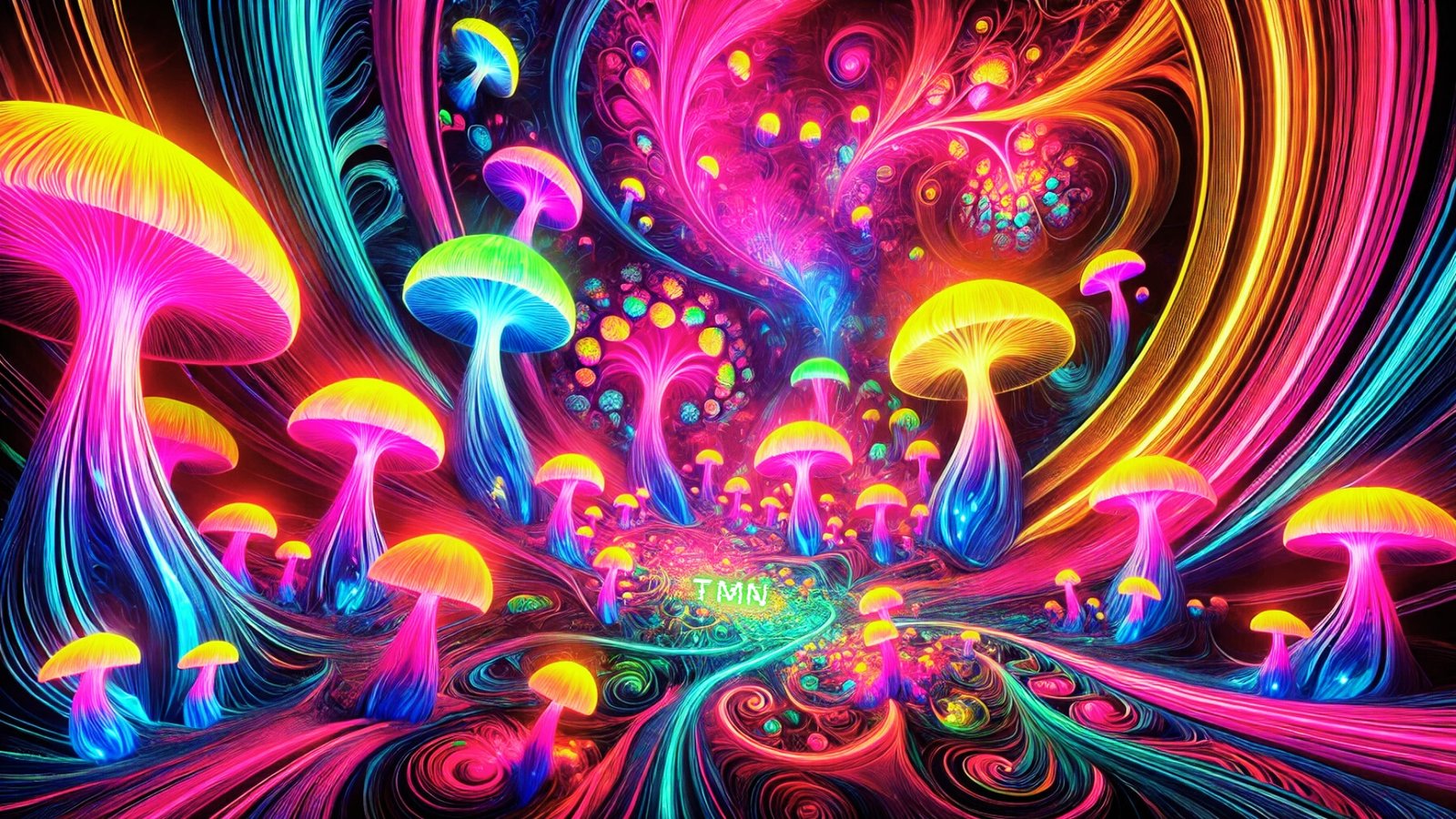
The Symbolic Power of Mushrooms in Art and Myth:
Beyond their visual influence, mushrooms carry deep symbolic weight in art. For centuries, mushrooms have been associated with transformation, death, rebirth, and spiritual enlightenment. In various mythologies, mushrooms are considered sacred, embodying the mystery of life emerging from decay. This symbolism extends into modern psychedelic art, where mushrooms are often portrayed as gateways between worlds—a bridge between the earthly and the ethereal.
The mushroom’s life cycle, particularly its growth from underground mycelial networks, mirrors the interconnectedness of all living things, a theme that resonates deeply in psychedelic art. Many artists use mushrooms to represent unity and oneness, reflecting the interconnected web of life that is often experienced during a psilocybin journey. The fractal-like patterns of mycelium, mirroring the structures found throughout nature, serve as metaphors for both ecological and spiritual oneness.
In some cultural traditions, mushrooms are depicted as conduits to divine knowledge. The Amanita muscaria mushroom, with its distinctive red cap and white spots, has been a symbol of shamanic journeys and spiritual awakening for millennia. In psychedelic art, Amanita muscaria often appears as a mystical totem, symbolizing the journey from the mundane to the transcendent.
Surrealism Meets Psychedelia: A Perfect Match
Surrealism and psychedelia share a common goal: to break free from the constraints of reality and explore the realms of the unconscious. The surrealist movement, championed by artists like Salvador Dalí and René Magritte, sought to depict the dream world, where logic and reason no longer apply. This dovetails perfectly with the psychedelic experience, where the boundary between waking life and the dream state dissolves, and the world is seen through the lens of altered perception.
Mushrooms have a natural place in this overlap. Their organic forms—ranging from delicate and ethereal to grotesque and otherworldly—make them ideal subjects for surrealist artists. The spiraling patterns, flowing textures, and strange anatomies of mushrooms lend themselves to the bizarre and whimsical nature of surrealism. Artists who explore the mushroom as a subject often depict them in dream-like landscapes, where they grow to impossible sizes, glow with unearthly light, or serve as homes for fantastical creatures.
In these surreal, psychedelic works, mushrooms often act as the key to unlocking hidden truths or secret dimensions. They become visual metaphors for the journey of self-discovery and the exploration of the inner mind, inviting viewers to question their own perceptions of reality.

Notable Artists Inspired by Mushrooms
Many visionary artists have found inspiration in mushrooms, incorporating their influence into both the themes and visuals of their work. One such artist is Alex Grey, whose intricate, spiritual depictions of the human body are deeply informed by his experiences with psilocybin and other psychedelics. Grey’s art frequently explores themes of interconnectedness, universal consciousness, and the sacred nature of life—concepts often revealed during a psilocybin journey. His famous piece, The Net of Being, reflects the fractal-like geometry and sense of unity that mushrooms often invoke.
Another artist, Mati Klarwein, known for his surreal, psychedelic album covers, incorporates mushroom imagery in his vibrant, colorful works. His art for Santana’s Abraxas and Miles Davis’s Bitches Brew captures the fluidity and dream-like quality of mushroom-induced visions, using swirling patterns, otherworldly landscapes, and surreal figures to depict altered states of consciousness.
Brian Froud, a fantasy illustrator known for his whimsical depictions of faeries and magical creatures, also draws heavily on mushrooms as symbols of mystery and magic. His works often feature mushroom-filled forests, where faeries and mythical beings interact with the fungi as if they are living, breathing entities. In Froud’s art, mushrooms represent the unseen forces of nature, acting as a link between the natural world and the magical realms.
Cultural and Spiritual Significance of Mushrooms in Psychedelic Art
Mushrooms have always held a place of reverence in many cultures, particularly in shamanic and indigenous traditions, where they are used as tools for spiritual exploration. In psychedelic art, mushrooms often symbolize the breaking away from materialism and the embrace of a more spiritual, connected way of being. The countercultural movements of the 1960s, which embraced psychedelics as a means of expanding consciousness, cemented mushrooms as icons of rebellion and self-exploration.
Mushrooms, particularly psilocybin-containing varieties, were seen as keys to unlocking hidden truths about the universe and the self. In the art of this era, mushrooms were depicted as both mystical and subversive, challenging conventional ideas about reality and encouraging viewers to see the world in new ways. This symbolism persists today, as mushrooms continue to be associated with healing, emotional growth, and spiritual transformation.
As scientific research into the therapeutic potential of psilocybin grows, mushrooms are once again finding their place in both art and culture as symbols of healing and emotional exploration. Modern psychedelic art often reflects this shift, depicting mushrooms not just as tools for rebellion, but as gateways to personal growth and well-being.
The universe of mushrooms is expansive, each variant bearing its own unique charm and characteristics. The Marketplace on the 🍄 Mushroom Network is a testament to this diversity. It is a haven for those seeking a deeper understanding of the magical world of mushrooms. If you’re keen on learning more about this type of mushroom and other mushroom variants, this Marketplace is your ultimate resource.
Woah there, eager beaver! 🦫 The 🍄 Mushroom Network’s Marketplace is a smorgasbord of mycological marvels, but it’s VIP access only! 🔐 Log In or Become a Myco-Patron (Yup, still FREE!) to see what all the fuss is about. Trust us, you’ll want in on these shroomy shenanigans! 🍄🎉
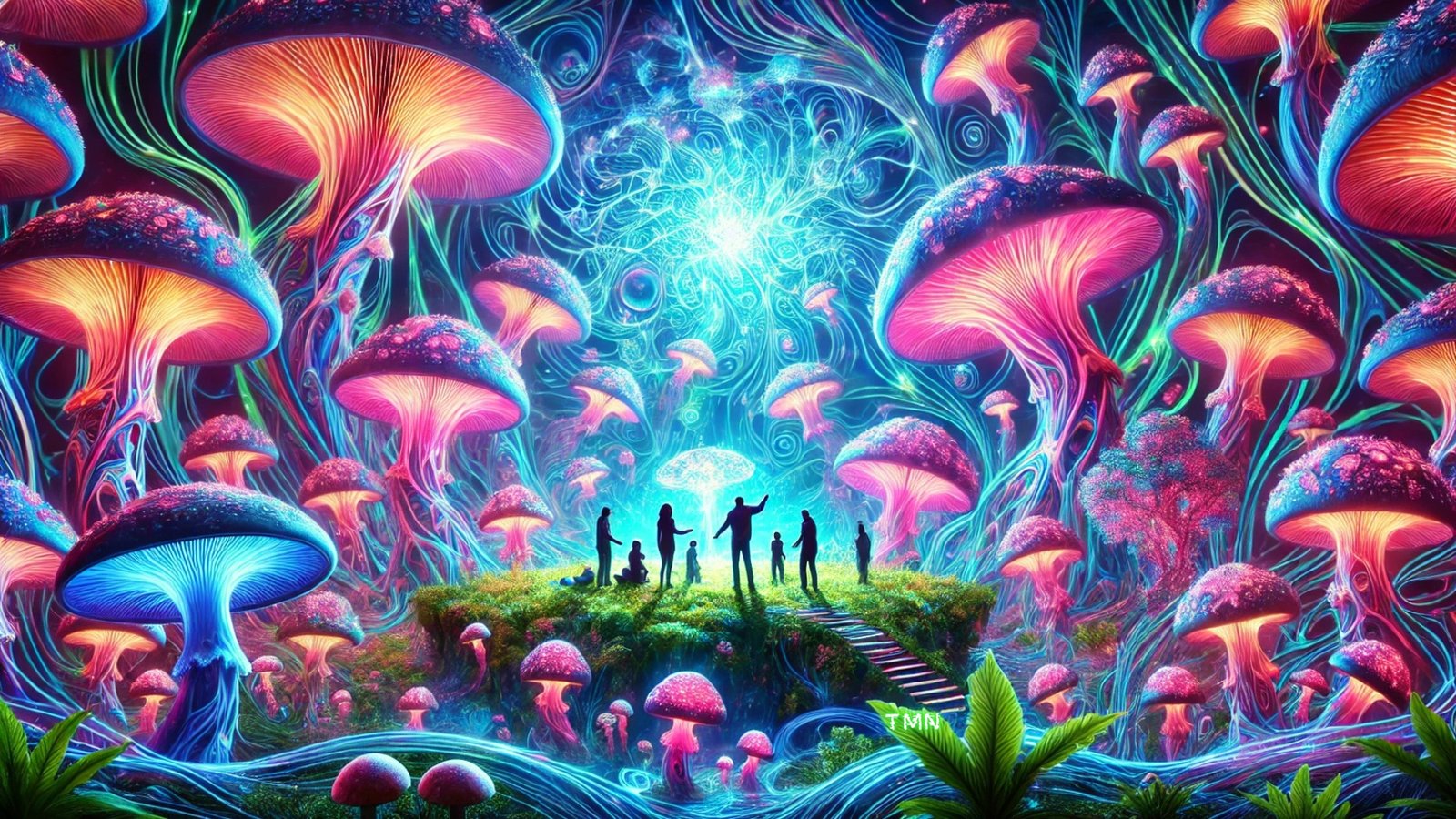
The Intersection of Technology and Psychedelic Art: Virtual Mushrooms
The advent of digital art and technology has expanded the possibilities of how mushrooms are represented in psychedelic art. Virtual reality (VR), 3D modeling, and digital animation allow artists to simulate the visual distortions of a psilocybin experience in new and immersive ways. Digital artists can now create entire worlds that mimic the surreal, fluid landscapes often seen during a mushroom trip, allowing viewers to step inside these altered realities.
In VR, artists can craft environments where mushrooms grow and pulsate with life, where the viewer can walk through fields of bioluminescent fungi or explore fractal-based, mycelial networks. These digital experiences push the boundaries of how mushrooms are depicted, creating immersive, interactive art that mirrors the hallucinatory nature of a psilocybin trip.
Artists like Android Jones are pioneers in this new digital frontier, using tools like VR and projection mapping to create psychedelic art that is both visually stunning and deeply immersive. His work, filled with mushroom-like patterns, sacred geometry, and kaleidoscopic visuals, takes viewers on a journey through the surreal worlds that mushrooms often inspire.
Scientific Insights: Psilocybin and the Creative Brain
Modern neuroscience has begun to shed light on why psilocybin has such a profound impact on creativity. Studies show that psilocybin increases connectivity between different regions of the brain, particularly those that don’t typically communicate. This results in a more fluid and flexible thought process, allowing for greater creativity and out-of-the-box thinking.
Artists who use psilocybin often report a heightened sense of flow—the state of being fully immersed in the creative process—where ideas seem to come effortlessly. This is partly due to the suppression of the brain’s default mode network (DMN), which is responsible for maintaining the ego and reinforcing rigid patterns of thought. When the DMN is suppressed, the artist’s sense of self dissolves, allowing for a more uninhibited, free-form style of creativity.
Not sure where to start? The 🍄 Mushroom Academy offers a wide range of courses tailored to your needs. Whether you’re a beginner eager to learn or an experienced mycologist looking to broaden your knowledge, the 🍄 Academy has something for everyone.
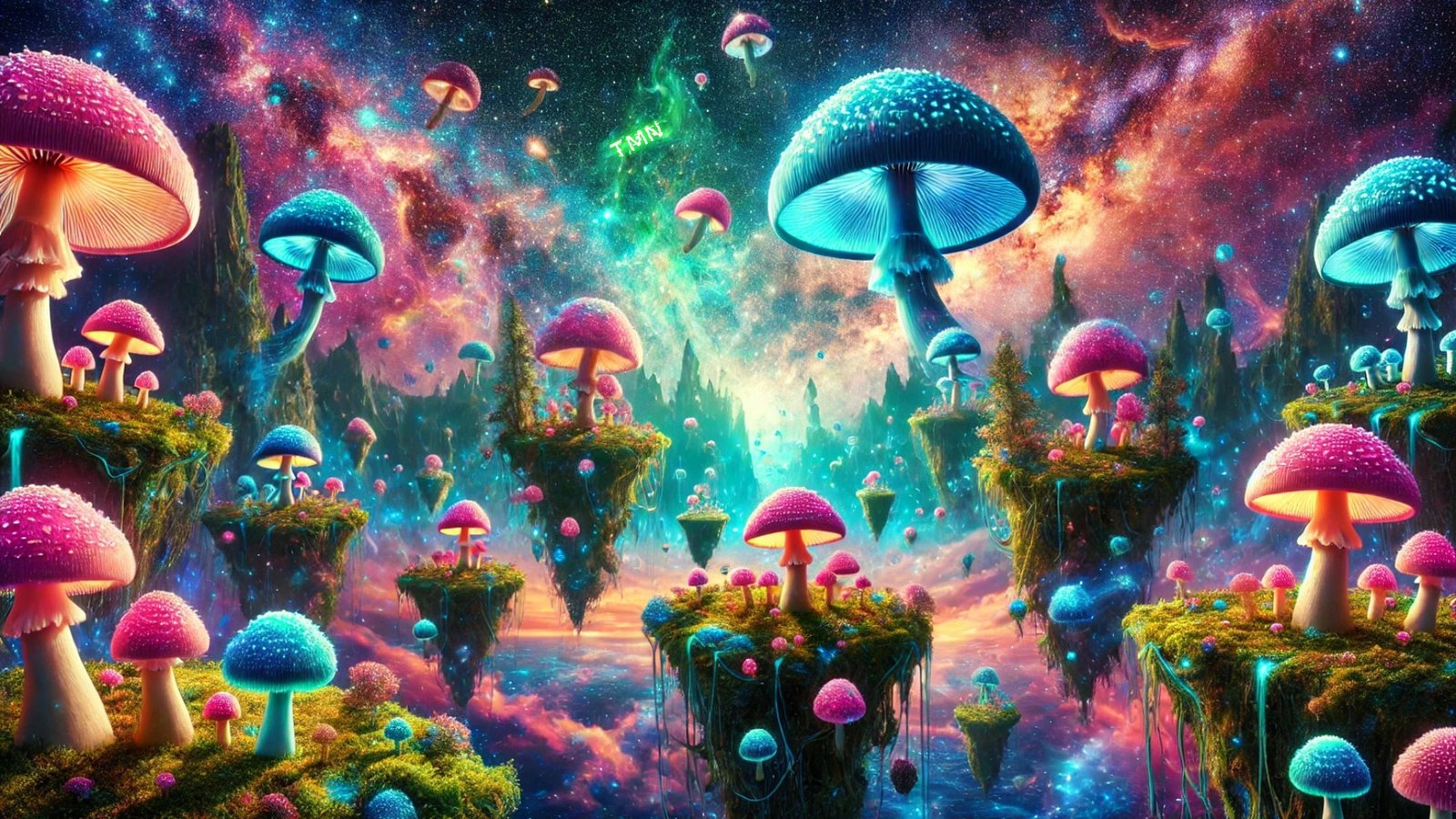
Conclusion:
Mushrooms, particularly those containing psilocybin, continue to be powerful muses for artists, shaping the world of psychedelic and surreal art in profound ways. From their symbolic resonance as agents of transformation to their ability to alter perception and expand creativity, mushrooms are more than just subjects—they are co-creators in the artistic process. As technology advances and our understanding of psilocybin deepens, mushrooms will undoubtedly continue to influence art, helping artists explore the farthest reaches of both the mind and the cosmos.
Love what you’re reading? Make it FBO (Facebook Official) with us! 🤘🏼 Hit that subscribe button on YouTube, follow our Facebook Page, join our FB Group – Wood Wide Web, and chirp along with us on Twitter/X. While you’re at it, peep into the 🍄 Mushroom Network’s Marketplace—where our Network shelves change faster than a Pink Oyster (Pleurotus Djamor) pins!
Recommended Reads:
Hunting for the Elixir of Life: A Comprehensive Guide to Finding, Identifying, and Using Reishi Mushrooms
In a quest for the proverbial “Fountain of Youth“, we often find ourselves overlooking the...
Read More...Colors in the Woods: A Mycologist’s Guide to Spotting the Brightest Fungi
For those wandering through the verdant woods, nothing captures the eye quite like the sudden...
Read More...Lion’s Mane (Hericium Erinaceus)
Dear Mycelium enthusiasts, scholars, and the fungi-curious alike, buckle up as we embark on a...
Read More...Caesar’s Mushroom (Amanita Caesarea)
SCIENTIFIC NAME: (Amanita Caesarea) COMMON NAME(S): Caesar’s Amanita | Royal Amanita | Orange Amanita |...
Read More...Whoa there, Spore Sport! 🍄 Looks like you’re not logged in yet. Don’t you know what you’re missing? MYCO-CREDITS! Imagine all the fungal fun you could have. It’s like finding a Morel in May and not picking it. Tragic, right? Log In or Become a Myco-Patron and start racking up those credits. It’s more rewarding than finding a mushroom in your backyard! 🌟🏡

